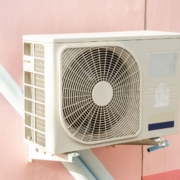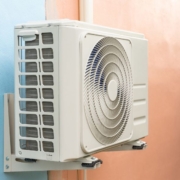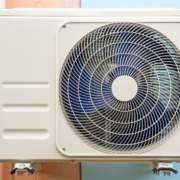A central air conditioning (AC) system is designed to cool your home efficiently by circulating cold air through ductwork and vents. When the AC runs but no air comes out, it indicates a problem that prevents proper airflow. Understanding the potential causes and solutions is important for maintaining comfort and avoiding costly repairs.
Common Causes of No Airflow in Central AC
One of the most common reasons a central AC runs without blowing air is a malfunctioning blower fan. The blower is responsible for moving cooled air through the duct system. If the fan motor fails, becomes disconnected, or has electrical issues, the AC may run but no air will circulate. Blower issues often require inspection or replacement by a certified technician.
Another cause is a clogged or dirty air filter. Filters capture dust, pollen, and debris, but excessive buildup can restrict airflow completely. A clogged filter not only reduces comfort but also places strain on the system, potentially leading to overheating or motor damage. Filters should be inspected monthly and replaced every 1 to 3 months depending on usage.
Blocked or closed vents and registers can also prevent air from reaching rooms. Sometimes vents are accidentally closed or obstructed by furniture, curtains, or debris. Ductwork problems, including leaks, disconnected sections, or collapsed ducts, reduce airflow and may cause the AC to run without distributing air properly.
Thermostat or electrical issues can contribute as well. If the thermostat signals the system to run but the fan relay or control board malfunctions, the compressor may operate while the blower does not. Electrical issues, such as tripped breakers or blown fuses, may also affect the blower motor or fan relay.
Signs Your Central AC Is Not Blowing Air
Several indicators help identify airflow problems in a central AC. Rooms may remain warm despite the system running. Air coming from vents may feel weak or absent. Strange noises, such as humming, clicking, or buzzing, often point to a malfunctioning blower motor or fan. Increased energy bills may occur as the system runs longer without effectively cooling your home.
Condensation or water leaks around the air handler can appear if airflow is blocked. Insufficient airflow prevents heat exchange, causing coils to freeze and drip water. This can lead to damage in ductwork or nearby flooring if not addressed promptly.
Steps to Restore Airflow
First, check the air filter and replace it if necessary. Even partially clogged filters can severely reduce airflow. Inspect all vents and registers to ensure they are open and unobstructed. Verify that furniture or other objects are not blocking airflow.
If the problem persists, the issue may be internal, such as a faulty blower motor, fan, or control board. Electrical connections should be checked, including fuses and circuit breakers. These checks are best performed by a licensed HVAC technician to avoid safety hazards and ensure proper diagnosis.
Ductwork inspection may be necessary for older homes or systems with long or complex duct layouts. Leaks, disconnections, or collapsed ducts reduce airflow and require sealing or repair. Ensuring ducts are properly insulated also improves airflow efficiency and system performance.
Preventive Measures
Regular maintenance extends the lifespan of a central AC and prevents airflow problems. Schedule annual professional inspections to check blower motors, coils, refrigerant levels, and electrical components. Replace air filters regularly and ensure vents remain open and clean. Avoid placing objects that block airflow near vents or registers.
Monitoring system performance helps detect issues early. Unusual noises, reduced cooling, or fluctuating temperatures should prompt an inspection. Timely intervention prevents minor problems from escalating into costly repairs or complete system failure.
FAQ
Why is my AC running but no air is coming out of vents?
Common causes include a malfunctioning blower motor, clogged air filter, blocked vents, or ductwork issues. Electrical problems or faulty fan relays may also contribute.
Can a dirty filter stop airflow completely?
Yes. Excessive debris buildup in the air filter can prevent air from circulating and strain the system.
How do I know if the blower motor is faulty?
Signs include weak or no airflow, unusual noises from the air handler, and a system that runs but fails to cool rooms. A professional inspection is recommended.
Can duct problems cause no airflow?
Yes. Leaks, disconnected ducts, or collapsed sections prevent air from reaching rooms and reduce overall cooling efficiency.
Is it safe to run an AC that is not blowing air?
Running an AC without airflow can damage the system, freeze coils, and increase energy consumption. Turn off the system and seek professional help.
Conclusion
When a central AC runs but does not blow air, it usually points to issues with the blower motor, air filters, vents, ductwork, or electrical components. Regular maintenance, including filter replacement and professional inspections, can prevent many airflow problems. Early detection of malfunctioning components helps restore comfort, reduces energy costs, and prolongs the lifespan of the AC system. Proper diagnosis and timely repair by a licensed technician ensure the system operates efficiently and delivers cool air throughout the home.




 premiercoolingandheating
premiercoolingandheating




